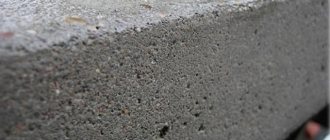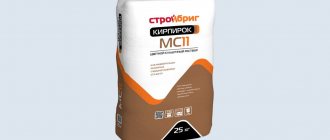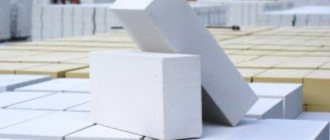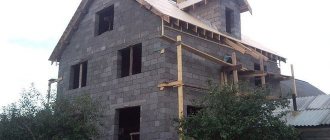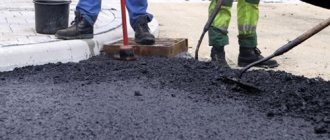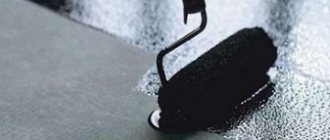For the construction of structures that are constantly exposed to high temperatures, ordinary brick is not suitable. For these purposes, special refractory bricks are used. They come in several types, but fireclay bricks are the most popular. The qualitative and technical characteristics of fireclay bricks allow this material to be used both for industrial purposes and in private construction. Let's consider the main characteristics inherent in this material and its main types.
When building a stove or fireplace in a house, the need to use fire-resistant materials comes to the fore. That is why most buyers choose fireclay bricks. This building material can withstand extremely high temperatures and direct, prolonged exposure to flames. It is noteworthy that fireclay does not deform or crumble even with prolonged heating.
What it is?
Fireclay brick is characterized by a very simple composition; it is based on crushed, dried fireclay powder, the concentration of which is 65-70%. This substance is made from simple white clay, which is cleaned and fired for a long time, due to which it exhibits pronounced fire-resistant characteristics. Additionally, coke and graphite fillers and coarse quartz grains are introduced into the raw materials. The initial components are thoroughly mixed, then shaped and sent for firing and crimping.
It is the firing features that determine the basic operational parameters of the material. The duration of baking of the material is of great importance. So, if the raw material is kept in a thermal oven, then a glassy film appears on its surface. It is quite durable and gives the material special resistance to mechanical damage, but at the same time its fire resistance decreases.
If, on the contrary, the firing is insufficient, such a material will perfectly absorb and retain moisture within itself, and therefore its strength will be very doubtful. The best brick for stoves and fireplaces can only be obtained if you adhere to the “golden mean”.
The production of fireclay bricks is regulated by current standards, and its dimensions and weight can often vary significantly: from 2.5 to 6 kg, and the parameters are 230x111x65 mm, as well as 300x150x65 and 250x123x65 mm. In addition, products differ in the density and porosity of their structure.
Blitz tips
- When choosing refractories, do not chase a low price - on the contrary, this will indicate low quality of the product.
- When constructing a stove or fireplace, you cannot use a mixture of red ceramic and refractory bricks for internal cladding - they have different technical characteristics and there is a high probability of destruction of the masonry.
- If you have no experience in preparing masonry mortar, it is advisable to use ready-made dry mixes produced in factories.
Note. Fireclay and clay based on it are environmentally friendly materials, as they are made from natural raw materials.
Characteristics of fireclay bricks
The weight of products from various manufacturers ranges from 2.8 kg to 4.5 kg. This indicator affects the thermal conductivity of the material: the higher the weight of the stove brick, the lower its thermal conductivity. Thus, heavier bricks will keep your home warmer longer.
The amount of aluminum oxide contained in a material determines its resistance to the aggressive effects of high temperatures, alkalis and chemicals. Aluminum oxide also makes stove bricks porous. Due to this, it heats up for quite a long time, but, at the same time, retains heat longer.
In addition, the higher the porosity of the material, the lower its strength: under the influence of heavy loads, excessively porous bricks deform and crumble. In order to determine which of the various brick options has greater porosity, it is enough to hold the products in your hands.
Particularly dense brick has a porosity below 3%, high-density - 3-10%, dense - 10-16%, compacted - 16-20%, medium-density - 20-30%, highly porous - 30-45%, lightweight - 45-85%. , ultra-lightweight – above 85%.
These characteristics of fireclay blocks will help you choose a brand of products that are ideal for creating specific building structures. The optimal density for fireclay bricks is 1700-1900 kg/m3. This parameter affects water absorption, thermal insulation properties, adhesion to the mounting mortar and the weight of brick blocks.
According to the method of forming the blocks, fireclay can be cast from slip, molded by a semi-dry or plastic method, fused, thermoplastic pressed or hot pressed. Traditionally, kiln bricks have rectangular geometric parameters. But, to meet consumers halfway, factories also produce it in arched, trapezoidal or wedge-shaped shapes. Existing standards allow this. The variety of shapes and sizes of oven bricks allows the construction of structures of various designs.
Manufacturers of fireclay bricks are constantly improving production technologies for this material. They change the shape of the products and use special additives that improve the characteristics of the brick. So, recently a stove brick has appeared that can withstand extremely low temperatures.
But, in addition to the positive ones, stove bricks also have negative properties. Firstly, very dense blocks cannot be cut. Secondly, products even from the same batch often have different sizes. Thirdly, high hygroscopicity increases the mass of stove bricks and reduces its strength when heated. Fourthly, having low resistance to freezing, when the thermal device cools down, fireclay bricks begin to crumble. Fifthly, laying fireclay bricks requires a special mounting solution. Sixthly, this material is classified as expensive.
Composition and properties
Fireclay brick, which is the most common type of such product, consists of the following components:
Refractory clay, which is yellow in color, in contrast to red, is used for the production of building types of bricks. The main chemical substance in its composition is SiO2, so fireclay bricks are classified as siliceous fire-resistant materials. Al2O3 is the main additive that the refractory mixture receives, consisting of up to 70% fireclay clay
Aluminum oxide both significantly increases the strength characteristics of the resulting refractory material, reducing porosity, and, very importantly, gives it resistance to alkaline and acidic environments.
The finished fireclay brick has a pronounced yellowish tint and a dense fine-grained structure.
Its properties include resistance to sudden strong heating, which is important when using it as the main material for the construction of various types of stoves; as well as fast uniform heating, high heat capacity, the ability to maintain a comfortable temperature in the rooms for a long period after the end of the fire
Other types of fire bricks are also mainly made from rocks, which will be discussed in the next chapter.
Properties of fire-resistant types of brick products, which are important when choosing them, in particular for the design protection of housings of various household and industrial equipment:
- Fire resistance. Like all other types of refractories, heat-resistant bricks can be refractory, with an operating temperature range of 1580-1770 ℃; highly refractory – 1770-2000 ℃; with the highest fire resistance – 2000-3000 ℃; super fireproof - more than 3000 ℃.
- Compressive strength, impact load.
- Density and porosity - these properties are inextricably linked, since the higher the porosity, the lower the strength of the refractory brick product becomes. They produce both especially dense bricks - with a porosity of up to 3%, and lightweight bricks, for which this figure can exceed 30%.
- Sintering degree. This indicator is higher for those refractory products that were produced at higher temperatures.
- The lower the sintering temperature, the lower the moisture resistance – up to 25%; and the higher - from 3 to 7%, with a high degree of sintering.
Figured refractory fireclay brick
Fireclay brick, what is it and what components give it such unique properties? These products can be easily recognized even by their appearance - they are characterized by a yellowish-sandy color and a granular, uniform structure.
It owes its properties to production technology. During the manufacturing process, the raw material mixture is molded and fired at elevated temperatures. At each stage, specialists strictly control both the processing time of the products and the temperature indicators.
If a brick block is not kept in a kiln, it will not have sufficient strength. A violation of the technology can be easily determined even visually - such a product has a lighter shade than that specified by the standards.
High fire resistance rates are largely influenced by the composition of fireclay bricks. Products are made from special grades of clay (in other words, “chamotte”) and some additives. Aluminum oxide is mainly used as additional components. This is what gives fireclay blocks the strength and resistance to aggressive chemical influences for which the material is famous. Depending on how much aluminum oxide is added to the mixture, the porosity of the finished product varies. Porosity, in turn, directly affects the thermal conductivity of fireclay bricks.
The more porous the brick block, the longer it will take to warm up, but it will also cool much more slowly. But if the porosity indicators are increased, this negatively affects the strength of the product - it crumbles and deforms under the influence of heavy loads.
So, fireclay brick is extremely durable, fire-resistant, has high heat capacity and is resistant to negative environmental influences. What shortcomings does it have? Let's highlight a few:
- The blocks cannot be cut because they are very durable.
- Products often vary in size (even those from the same batch).
- The material is quite expensive.
Introduction
Those who have already purchased building bricks in order to build a structure with their own hands (house, garage, fence) have an idea of the classification of this building material (silicate, ceramic).
They know what, for example, double sand-lime brick M 150 is according to the standards. They may say that since it is double, its geometric dimensions are 250 mm x 120 mm x 138 mm. And the brand “M 150” is its indicator of strength and indicates that this silicate building material will withstand a load of 150 kg per 1 cm2.
Standards, regulatory documents
Anyone who is interested in more complete information on the topic, standards on refractory materials used by humans in construction (laying stoves, fireplaces) today can familiarize themselves with the following regulatory documents:
- GOST 8691 - 73 “Fireproof products for general purposes.”
- GOST 24704 - 81 “Fire-resistant corundum and high-alumina products.”
- GOST 390 - 96 “Fireproof fireclay and semi-acid products for general purpose and mass production.”
- GOST 24704 - 94 “Fire-resistant corundum and high-alumina products.”
- GOST 4157 - 79 “Fire-resistant silica products”.
- GOST 5040 - 96 “Fire-resistant and highly refractory lightweight heat-insulating products.”
- GOST 21436 - 75 “Fire-resistant and highly refractory products for lining rotary kilns.”
- GOST 6137 - 97 “Fire-resistant aluminosilicate mortars”.
- GOST 969 - 91 “Aluminous and high-alumina cements.”
How to choose quality products?
In some cases, a darker color predominates on the surface. At the same time, it is covered with a smooth glass film. This is caused by the fireclay being overexposed during firing in the kiln. Burnt bricks have great strength, but due to the smooth surface there is no high-quality adhesion to the mortar, as a result of which the finished structure turns out to be fragile. However, such bricks can be used when constructing a foundation.
Only high-quality products have the above qualities. If the production technology is disrupted, the finished brick will lose about 75% of its positive qualities. For this reason, it is necessary to know the main differences between high-quality fireclay and be able to recognize them at the time of purchase. A brick made using fireclay powder should have a geometrically correct shape and have thin edges. The surface should be slightly rough, with a clearly visible granular structure.
If you knock on a well-fired brick, it will make a metallic and ringing sound. During the fall, it will not crumble into dust, but will break up into large elements. If a brick crumbles when it falls and a dull sound is heard upon impact, you have an insufficiently fired brick. The problems of this material will be increased hygroscopicity, low strength and insufficient thermal conductivity.
Marking of fireclay bricks
Most often, fireclay bricks are marked with the letter “Ш”. Other letters and numbers indicate dimensions, technical characteristics, temperature properties and other parameters of the products. Each brand of fireclay brick has its own technical characteristics, as well as the weight and dimensions of the products. Accordingly, their prices also vary.
For example, what does the marking ShB 5 SL mean?
Ш – fireclay aluminosilicate brick, B – fire resistance class in accordance with GOST (up to 1400 °C), 5 – geometric parameters (230x113x65 mm), SL – product manufacturer (Sukholozhsky Refractory Plant).
If the second letter after Ш is missing in the marking, most likely this stove brick was made not according to GOST, but according to the manufacturer’s specifications. Within each brand there is a deeper classification: by size, shape, thermal conductivity.
Marking of the most popular fireclay brick products:
- SHA, ShB, SHAK are the most popular, universal fireclay blocks used for the construction of stoves and fireplaces; they are very durable, fire-resistant and have the best price/quality ratio;
- ShV, ShUS – oven bricks with high heat capacity, most often used in industry for lining the walls of gas ducts of steam generators and convective shafts;
- ShK – fireclay products used in industry for the construction of coke production equipment;
- ШЛ – lightweight, highly porous stove brick with fire resistance up to 1300 °C and a low expansion coefficient, used for lining hearths, has about 50 standard sizes;
- ШЦУ – double-sided end fireclay blocks used in the construction of rotating kiln structures;
- PB – fireclay bricks, most suitable for the construction of household barbecue stoves;
- PV – fireclay bricks, which are most often used for the construction of internal walls of fireplaces and chimneys.
The excellent properties of oven bricks are ensured by its production technology. The raw material mixture is molded and fired at high temperatures. Specialists strictly control the temperature and processing time of bricks at each stage of production. If a brick block is not kept in the oven for an insufficient amount of time, it will become brittle. Defective stove bricks differ from high-quality ones in a lighter shade.
When choosing stove bricks, you should give preference to material produced in accordance with GOST, since it is of higher quality. In addition, the size of blocks with the GOST mark is optimal for the construction of brick structures. You also need to pay attention to the labeling.
HOW TO FIND AND SELECT DEFICIENCY FRAMEWORK PRODUCTS
Defects for such a “responsible” brick are unacceptable. You can tell a quality brick by its metallic sound when you tap on it. If you hit it harder, it should not crumble, but should break into large pieces. If it crumbles into crumbs and makes a dull sound when you hit it, it indicates that it was underburned. Under no circumstances should it be used for its intended purpose (that is, for laying a stove), as it will fall apart, or will not heat and retain heat, because the brick will acquire an unpleasant property, which manifests itself in the active absorption and retention of moisture. Such (wet) fireclay bricks lose their quality by 75 percent compared to dry ones.
Fireclay (fire-resistant) bricks are produced and produced much less than silicate or ceramic ones. This is due to the specifics of this specialized building material. Therefore, in order to choose it correctly, you need to listen to the advice of professional craftsmen who understand quality and know suppliers. Fireclay bricks are more expensive than regular bricks, but much less is also required. Do not forget that the masonry mortar must contain refractory clay and crushed fireclay bricks.
SCOPE OF APPLICATION
Areas of application often depend not only on technical characteristics, but also on the shape of the building material. For example, fireclay wedge brick is used in the construction of tandoors, since with its help you can easily make a round structure without cutting (and it is very difficult to make, as you remember). Fireclay is also used for construction:
- Outdoor barbecues and barbecue ovens, which are operated in conditions of severe corrosive influence.
- Grub and chimneys in autonomous heating systems. Its almost unlimited shelf life makes it attractive for this type of building.
- Russian baths and chimneys. Environmentally friendly material that does not emit harmful volatile substances when heated.
- Fireplaces and hearths inside the house: lightweight fireclay bricks are very beautiful to look at and practical to use.
- Industrial premises, pipes, boilers, smelters. The thickness of the fireclay brick and its density play a role here; in industry, they most often use custom-made fireclay, which has half the density and shrinkage.
Now we have figured out where fireclay bricks are used, what characteristics and parameters they have, and why they are needed in general. Make the right choice and happy construction to everyone!
Classification Features
Designation and marking ШБ-5, ШБ-6, ШБ-8, ШБ-9; SHA-5, SHA-6, SHA-8, SHA-9
Dimensions, mm 230x114x65, 230x114x40, 250x124x65, 300x150x65; 230x114x65, 230x114x40, 250x124x65, 300x150x65
Shape: straight
All materials made from refractory clay are marked with letters and numbers. The first letter should be “Ш” - it indicates that the brick is made from aluminosilicate clay. The second letter exists in two variations “A”/”B”. The letters indicate that the product is suitable for all types of masonry.
Marking
The presence of only one of these letters informs the buyer that the manufacturer is guided exclusively by GOST standards. The designation “SHA” means that the product contains a huge percentage of aluminum oxide.
That is, approximately 30%, which increases fire resistance to +1690C. “ShB” has approximately 28% aluminum oxide, which makes it possible to withstand up to +1650C. If after the letter “Ш” there is a number, for example “Ш5”, this means that the manufacturer did not use GOST indicators, but applied its own manufacturing technology.
A product with the “5” brand meets the dimensions 230x114x65 mm. The last two indicators indicate the manufacturer.
According to the standard, similar abbreviations of a refractory product are shown:
- ША, ШБ – general purpose;
- ShKU – bucket;
- SHAV – cupola;
- Broadband – domain;
- ШЦУ – double-sided for lining.
Heating devices are equipped using a general purpose product. We will analyze the standard sizes of refractory bricks in detail. The alumina type is considered more in demand, including refractory clay and fireclay product.
For this type it is necessary to adhere to precise firing. For furnaces, only products of the first type are used, which crack when heated. Fireproof brick size “ШБ5” looks like a yellowish rectangle. Scale 230x114x65 mm.
Dimensions ШБ5
According to the standard, the material must meet the following characteristics:
- part of the binary compound of aluminum and oxygen – 28%;
- fire resistance – not less than 1,650oC;
- There is no tºC during softening.
“ША8” product is used in industrial and private buildings. Has a high level of aluminum oxide. Used for internal laying of chimneys.
Product Rating:
- percentage of aluminum oxide – 30%;
- fire resistance – 1 690oC;
- softening tºC not less than 1,300oC.
ША-6 is used in the construction of thermal units at t 1,690ºC. The main properties of the product do not differ from the “ША8” marking. The only difference is in size. Product weight per piece – 3.4 kg. Scale – 230x114x40 mm. Cost from 30 rub./piece.
Types of Sha
Fireproof brick “ША5” measures 230x114x65 mm. The weight is the same as that of “ША8”. The price of a fire-resistant grade is 30 rubles/piece. Dimensions are the main criterion in the selection of refractory bricks.
It is necessary to avoid the occurrence of areas with a very thin ball of mixture. The cost of refractory bricks is calculated using the construction diagram.
Marking ША5, ША6, ША8, ШБ5, ШБ8.
Size, mm 230x114x652, 30x114x602, 50x124x652, 30x114x652, 50x124x652, 30x114x652, 50x124x65, 230x114x652, 30x114x65.
Fire resistance, C 1 690, 1 690, 1 690, 1 690, 1 690, 1 300, 1 300, 1 150, 1 465.
Marking
When choosing a material for masonry, you should understand how much red stove brick is needed for a certain area and a number of key properties that are responsible for the quality of the product. Only by using a high-quality product can a smooth and reliable stove be created.
When selecting products, special attention should be focused on the following properties:
- the uniformity and uniformity of the plane must be almost perfect. There is no need to purchase a brick, in the plane of which remains of inclusions, stones, inclusions, and cracks can be identified;
- the material must have a uniform, identical tone;
- the correct formation of the stone indicates quality. It is necessary that all edges be the same length, without flaws. The presence of protrusions will cause damage during installation;
- different masses of bricks with the same dimensions indicate density. The greater the mass, the denser the product, and the longer it accumulates heat. To build the foundation of a building, you should know information about the weight of the brick.
Advantages
- increased strength;
- high fire resistance;
- high heat capacity;
- sufficient resistance to various types of negative environmental influences;
- the possibility of trouble-free operation without deformation and wear for many years;
- Thanks to the smooth, dense surface, it is possible to install fireplaces and stoves without subsequent finishing.
Flaws
- Fireclay brick blocks, due to their high strength, are extremely difficult to cut;
- very high cost;
- installation requires a special solution;
- The laying of fireclay brick structures must be carried out exclusively by a highly qualified specialist.
Methods of application, installation methods, possible options for structures built from fireclay bricks are shown in photo and video materials. Excellent reviews from both builders and customers who have experience in the operation and use of fireclay brick structures make it an indispensable material in the construction of various objects and structures.
Main types
Many manufacturers met customers halfway and began producing fireclay stone of various types, differing in shape, weight and size, as well as manufacturing technologies and degree of porosity. Today, the following forms of fireclay are presented on the construction market:
- straight;
- arched;
- trapezoidal;
- wedge-shaped.
Thanks to this variety of forms, it became possible to erect structures with complex structures.
The following types of fireclay stone with different percentages of porosity are distinguished:
- ultra-lightweight (more than 85%);
- lightweight (45-85%);
- increased porosity (30-45%);
- medium-dense (20-30%);
- compacted (16-20%);
- dense (10-16%);
- high-density (3-10%);
- especially dense (less than 3%).
Such qualities make it possible to understand which brand is best to choose for the construction of specific structures. As for the method of forming bricks, the following options are distinguished:
- fused;
- cast;
- hot pressed;
- thermoplastic extruded;
- molded using the plastic or semi-dry method.
Technologists at large factories continue to develop new product options. They add new components to the composition that improve its quality. In addition, production technology is improving, which makes it possible to obtain products with unusual properties. Thus, fireclay appeared, which has the ability to withstand extremely low temperatures.
Are fireclay bricks harmful?
There is a myth among uninformed people that fireclay bricks during operation can be harmful to human health. Is it so?
We hasten to assure you that the harmfulness of fireclay bricks has not been proven by any research. This material is made from environmentally friendly material – clay. Even though it has slightly different properties, it is still ordinary clay. And even when exposed to extremely high temperatures, fireclay bricks do not emit any harmful substances into the atmosphere. Otherwise, even pottery would be considered dangerous to human life.
How to put it correctly?
The technology for constructing stoves and fireplaces from fireclay bricks at home consists of 2 stages:
- preparatory work;
- directly masonry.
At the stage of preparation for work, all future corners and walls are marked, as well as the production of the necessary adhesive mortar and preliminary dry laying. For permanent bricklaying, a special composition is used; it can be bought ready-made in a store, or you can prepare it yourself. You will need refractory powdered clay, high-quality fireclay sand, and industrial water.
First you need to grind the clay, then sift all the sand and add water to the resulting clay-sand mixture with constant stirring. The finished composition is left for two to three days, stirring from time to time. Clay and sand are taken in a ratio of 1: 2; some builders recommend adding salt or 3% liquid glass to the composition at the rate of 100 g per 10 liters of water.
Fire-resistant bricks are first cut and then fastened so that each subsequent row completely overlaps the seams between all the blocks of the previous row. This technology ensures the strength of the entire structure and also promotes normal load redistribution.
When installing with your own hands, pay special attention to the seams. If it is done incorrectly, that is, the seam is too deep or not completely sealed, drops of rain and snow begin to get inside (this applies to street structures), and when cold weather sets in, the masonry cracks. A fireplace that is cracked at the seams cannot perform all its functions in full, and its heat capacity is significantly reduced.
Using clay for plaster
Fireclay clay as a plaster in the application process is not much different from conventional plastering with cement. To complete the work, you will only need a large and medium spatula.
The solution is prepared in a ratio of 7:2:1, where the following materials are in order from greatest to least:
- Quarry sand.
- Fireclay sand.
- Portland cement.
Portland cement is an essential component in the composition Source udarnik.spb.ru
As in the case of masonry mortar, salt can be added to improve properties. Only 100 grams is enough for a bucket.
Fireclay clay, which is used for plaster, is applied with a spatula. During the process, you need to quickly pick up all the small drops and level the surface. The thickness of the plaster layer should be 1-2 mm. After this, leave to dry, the exact time of which will be indicated on the fireclay clay packaging.
Fire brick for furnace
When choosing fireclay refractory bricks for a furnace, it is advisable to follow 4 principles:
- the ability to accumulate and retain heat for a long time;
- high mechanical strength;
- resistance to temperature amplitudes;
- ability to withstand the highest temperatures and open flames.
It would seem that! Why such difficulties when choosing fireclay bricks for a stove or barbecue - this is not building a house. However, the situation is such that fire-resistant and reliable building material is very important for laying the hearth.
The furnace has a lot of responsibilities and difficulties - to cope with a large number of negative aspects affecting it: the highest possible temperature conditions and sudden temperature changes. Such difficult conditions dictate the choice of special, most reliable bricks for the construction and finishing of the stove in the house.
The shape of the refractory brick is no less important - it must be correct with smooth edges, not have chips or damage, and most importantly - have a high-quality firing. The size of the kiln brick is also fixed and can be selected from only two options - 23 by 12.3 or 11.3 and 6.5 cm - these are the standard parameters used in classic drawings for laying out building materials.
The oven consists of several segments. So, if we have described the general algorithm, then the assembly of the ash pan and firebox is somewhat different from the assembly of the main structure. For these departments, exclusively yellow building bricks are used, while for the rest of the structure, classic red or Gzhel white are used.
The marking of fireclay refractory bricks for laying a furnace should also not be overlooked. For such work, the ideal material is in the marking range M150 - M 200. It was already mentioned earlier that these numbers mean the strength of fireclay.
Another detail that should not be overlooked is the color of the brick - it must be uniform and not contain any inclusions both outside and inside.
If you are planning to build a brick grill with your own hands or a large stove, you should not skimp on buying refractory bricks for the stove and buy silicate, slotted or hollow ones - such building material does not have fire-resistant qualities, does not withstand high and low temperatures, as well as temperature changes and has low thermal conductivity.
conclusions
Before you buy a refractory material, familiarize yourself with its main characteristics and dimensions, which differ from the parameters of ceramic, silicate and simple types.
Experienced builders use fireclay for laying thermal structures, which consists of a special type of clay raw material, fired until it completely loses its plasticity. The material protects and transfers heat well, withstanding unstable temperature fluctuations without losing the initial characteristics of the material.
Despite the fact that the fire-resistant chamotte product is more expensive than existing analogues, the material has only positive features. To make an excellent choice of bricks, it is recommended to consult with a master who will calculate the amount of material needed.
What kind of brick should the stove be made of?
Brick stoves are still popular and loved in almost every Russian country house or bathhouse. And if you are just thinking about building this structure that will provide comfort and warmth, then the following tips will be completely useful.
For efficient heat generation, absence of smoke and fire safety, only high quality building materials are used in the furnace masonry.
The stove consists of four fragments: the foundation, the firebox, the smoke circulation and the chimney. For each compartment it is better to choose a special brick suitable for the function of the fragment.
As a rule, fireclay bricks are used in stove masonry when laying the firebox, and ceramic bricks are used directly for the stove itself. Many neophytes may want to line the entire stove out of fireclay just to be on the safe side, but there is no particular need for this. Moreover, this would not be the right solution: the refractory brick gets very hot, which can lead to burns when it comes into contact with the skin, and financially, such a design would be unreasonably expensive.
Price
The price of fireclay bricks depends on many factors.
In addition to the characteristics that each specific refractory product has, the manufacturer plays an important role, which can set its own price.
For example, the Borovichi plant is engaged in the production and subsequent sale of refractory bricks of grades ША-5,6 and 8. Their cost is as follows:
- ША-5 – the price is approximately 51 rubles per piece;
- ША-6 – the cost of a brick is 40 rubles;
- SHA-8 - such a brick costs almost the same as SHA-5 - about 50 rubles apiece.
Brands ШБ-5 and ШБ-8 are produced, in particular, by. The cost of ShB-5 bricks is about 36 rubles per piece. ShB-8 is a little more expensive - 24 rubles per brick.
Mortar for laying refractory bricks
A mortar for laying fireclay bricks is any of the many options for conventional building mixtures obtained by mixing a binder, filler, sealer and special additives.
Cement, lime, gypsum, clay, or any mixture containing the above materials can be used as a binding ingredient. Sand acts as a filler, and ordinary water serves as a sealer.
Solutions are classified according to the amount of binder present in the mixture, the properties of this binder, as well as the proportion between binder and filler. Simple mortar - only with cement, gypsum or clay, the class is indicated by two numbers separated by a colon. The first number is the amount of binder, and the second is the amount of aggregate.
Complex mortar - cement plus gypsum or lime plus clay acts as a binder. Here the class designation is in three numbers: the amount of main binder, additional binder and filler.
Solutions for laying fireclay substances may differ in properties:
- air - harden only in dry conditions;
- hydraulic - requires a moist environment to harden.
The proportions of binder and filler also affect the classification of solutions:
- fatty - this means an excess of astringent. The advantage of such solutions is their plasticity, and the disadvantage is large shrinkage after drying:
- normal - everything is in classical proportions;
- skinny - a small amount of astringent ingredient, which gives negligible shrinkage, and this is very important for facing work.
Differences in mortars for laying fireclay bricks by density:
- heavy - prepared on regular sand;
- the lungs are mixed with porous sand.


